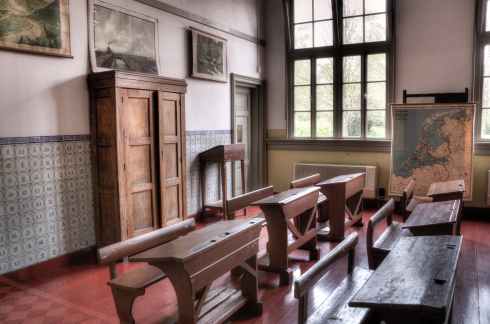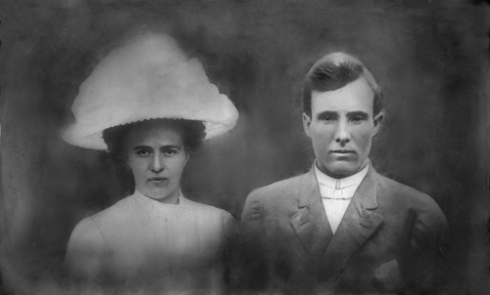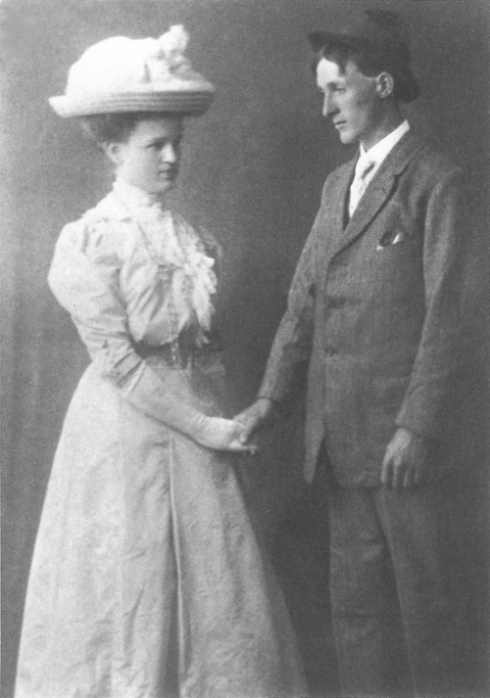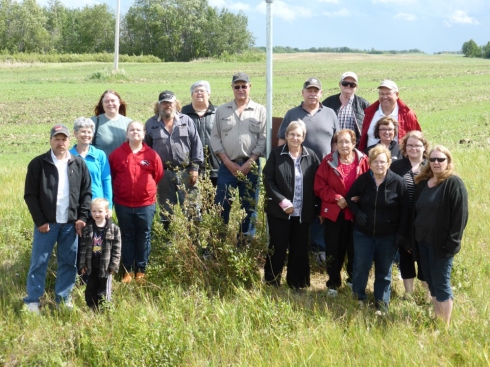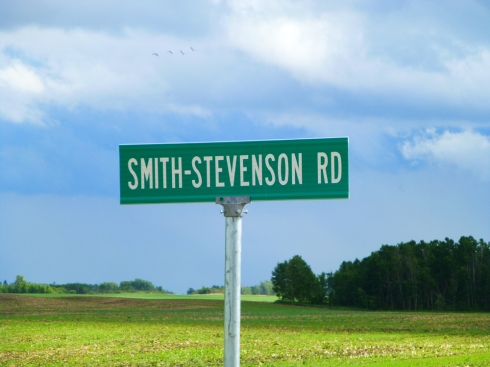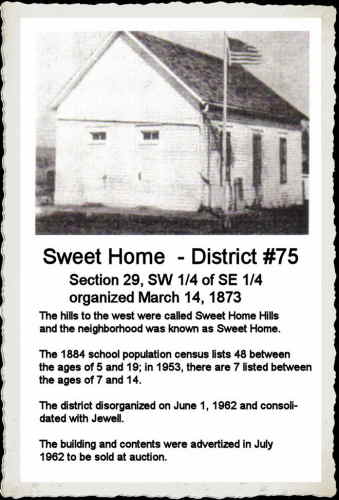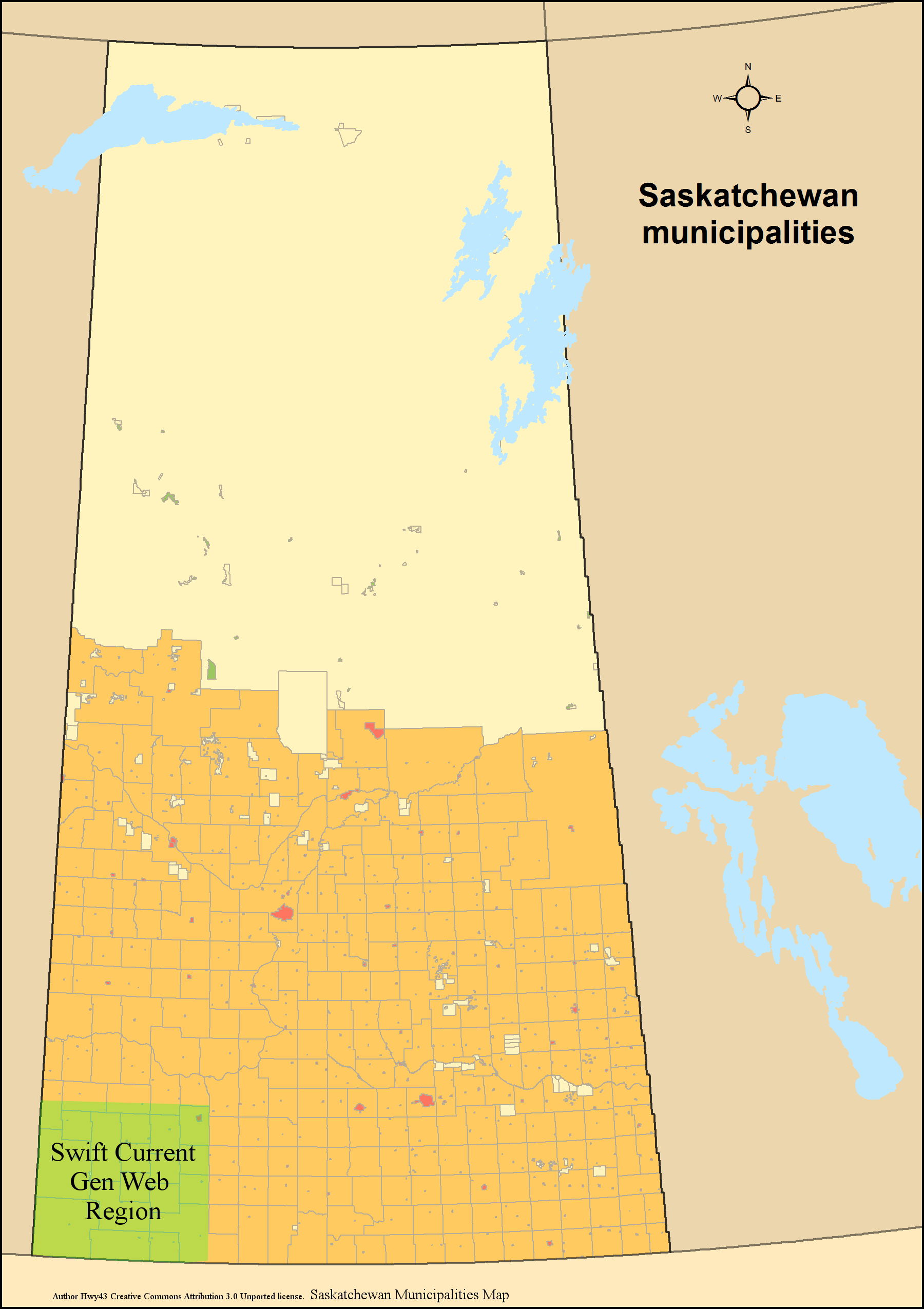
“The local historian will deal with both written and unwritten sources. He will be part archeologist, and part geographer, since a writer mus explain how the land, the soil of the locality, was mastered to human purposes. He will go further, much further, for he must understand and he must know the character of the land so that he may explain and interpret the effects of human actions on the landscape. Certainly he must be aware of, and know the shy of, water courses, trails, roads and fields.
The local historian will be, in part, an economic historian, because the greater part of a man’s life is spent gaining a livelihood – but at the same time he will be an historian of art, and education, and religion- because man does not live by bread alone. He will need to be a modernist because he will need to appreciate the impact on a local community of rail and motor transport – and the social and economic effects of the abandonment of a major form of transport. Certainly he must know sociology since he is attempting to reconstruct social life and society in the earlier days of the local community.” (Archer, 1979)
Population growth has increased, and declined throughout the evolution of the region. The adaptation to a common language facilitated cooperation and economic survival. Hunting and gathering gave way to domestic livestock, and agricultural pursuits. Doukhobors, Mennonites, German Catholics were a few of the ethnic groups who chose to establish farm villages, and settle in a nuclear group with the government waiving the rural survey settlement scheme. Rural settlement on homesteads was a method to disperse the immigrants, avoiding the overcrowding and overpopulation of Europe. How did the patterns of rural pioneer settlement arise, and why did urban settlements first appear? Why has the population shifted, with people moving from one location to another? What are the consequences?
The first nations of the plains have had a rich history in this area. Nakota of the late 1600s were displaced by Cree from the north east, and Assiniboine from the south east over the 1600s. Saulteaux made inroads during the 1700s from the east, however settled further east near the Manitoba-Saskatchewan border by the time the treaties were signed. The Plains Cree made residence in the Saskatoon Gen Web region during the 1800s, were joined by Métis in the mid 1800s
Early fur trade journeys down the South Saskatchewan River were made by Joseph Smith 1763-1764 and William Pink 1766-1767. Matthew Cocking explored a route through the northern portion of the Saskatoon Gen Web Region 1772-1773. The grand majority of fur trading posts were located north of the “tree line” and north of the Aspen Parkland of the Saskatoon Gen Web Region. That being said, Edge of the Woods Hudson Bay Company Post was established about 1863 south of the present day City of Saskatoon, and Moose Woods trading HBC south of Edge of the Woods post had a brief lifespan 1858/1863 and again revived 1874.
The John Palliser Expedition came down the South Saskatchewan River 1857-1859 taking in data of the lad between the Rocky mountains and the Assiniboine River. Henry Youle Hind also made the route in 1858 down the South Saskatchewan River, as did William F. Butler 1870-1871. John Macoun in 1875, and again in 1879 traversed across land crossing the South Saskatchewan River.
Henry Budd founded Carlton House Church of England Mission at Fort Carlton in 1862. On the other side of the South Saskatchewan River, the Roman Catholic Mission was established in about the same vicinity.
All the British colonies of Canada, provinces and territories were united in the Canadian Confederation on July 1, 1867. To include British Columbia into confederation, an inter-colony railroad would improve communication and transportation in general between the settlements of eastern Canada, those communities of British Columbia. To make the railroad economically viable, pressures arose to expand the population across the prairies to improve trade.
Rupert’s Land, or Prince Rupert’s Land, was a territory in British North America comprising the Hudson Bay drainage basin. This land was operated by the Hudson’s Bay Company for 200 years from 1670 to 1870. Rupert’s Land was transferred to Canada in 1869, but the transfer was only consummated in 1870 when £300,000 was paid to the Hudson’s Bay Company.
The Government of Canada passed the Dominion Lands Act of 1872 creating the opportunity for settlers in the Last Best West.
The creation of the Department of the Interior in 1873 had a mission to attract settlers to Canada, creating a strong agricultural economy out west. Settlers were pulled to the area with strong motivations of a better life, and were pushed out of their homelands because of restrictions, over-populations, and under-employment.
David Laird becomes the first Lieutenant Governor of the North West Territories in 1875.
Central and west central First Nations bands signed Treaty 6 in 1876 at Fort Carlton, and again at Fort Pitt later.

Saskatoon Gen Web Region in green NWT 1900 map Adapted from: “White, James. Manitoba and Northwest Territories [map]. 1:950,400. [Ottawa]: Dept. of the Interior, 1900. Red blocks show total acreage of land under crop in Manitoba and the Northwest Territories respectively. Shows size, in acres the areas of Athabasca, Alberta, Saskatchewan, Assiniboia and Manitoba in 1900. Source: University of Manitoba : Elizabeth Dafoe Library : Map Collection ” Creative Commons Attribution 2.0 Generic
December 23, 1881 the Dominion Government passed regulations allowing colonization companies to be created. These companies would be eligible for odd-numbered sections 24 miles north of the CPR at $2.00 per acre under the pre-requisite that two settlers were residing upon each odd and even section within five years. Colonization companies which could earn the maximum rebate may pay as little as #1.00 an acre, and sell land for $3 to $15 an acre once the colony’s even numbered sections were settled. Besides the Temperance Colonization Society with 213,760 acres, H.D. Smith 10,240 acres and P. Valin 32,900 acres were business applicants in the Saskatoon Gen Web region.
Districts of Assiniboia, Athabasca, Saskatchewan and Alberta are created in the North West Territories in 1882. (The Saskatoon Gen Web Region straddles the Districts of Assiniboia and Saskatchewan)
Though the transcontinental Canadian Pacific Railway went through southern Canada, rail service did not extend north until 1885 when the Qu’Appelle Long Lake and Saskatchewan Railway and Steamboat Co. (QLLS) ran a line between Regina and the south end of Long Lake (Last Mountain Lake). Entrepreneurs using the spring and summer months for construction had plans to use the rail to transport people and goods to Long Lake, and then steamboat for a great length, with another rail line extending from the north end of the lake to Saskatoon and Prince Albert. However, the prairie winters, soon showed the impracticality of using steam paddle ship on a frozen lake. Steamships did operate on Long Lake until the first world war 1914-1918.
1884-1885 see the rising of the Métis and the Northwest Rebellion; post-Confederation Canada’s first naval battle. Gabriel Dumont rides to the United States of America to convince Louis Riel to return to Canada. Louis Riel was the leader of the Métis and was elected to a provisional government in 1869 before the Red River Rebellion and as Provencher, Manitoba Member of Parliament. “Saturday March 28, 1885. …This morning’s paper has startling news, received over night, by wire from Winnipeg. A clash, it is stated has taken place between Riel’s followers and a small force of Mounted Police and civilians, under Major Crozier, at a place called Duck Lake, in which ten civilians and two Police, are reported killed: that the force, being outnumbered, was compelled to retire…The cause of the trouble, so it is said, arose from a grievance of some standing, over Squatter’s rights, wherein early settlers found their lands taken over their heads, by new comers, armed with deeds of possession, obtained through influence at head-quarters. Be that as it may, not since the days of the Fenian Raid, has the country been so stirred over the calamitous news, and the dread of a possible Indian uprising, [is] coupled with the necessity of a prompt solution of the difficulties of transporting troops, and supplies, over such a great distance through unsettled parts.” Archer, 1962) The battle sites of Fort Carlton, Duck Lake, St. Laurent, Batoche, and Fish Creek are within the Saskatoon Gen Web region, as is Saskatoon’s Marr Residence, [National Historic Site] a field hospital to treat Major General Frederick Middleton’s wounded soldiers during the resistance.
Louis Riel was sentenced to hang by the neck until dead following his trial for high treason in Regina. W.G. Books a juror from Indian Head reported to E.R. Powell; “We were asked to declare the man insane. He seemed to us no more insane than any of the others who addressed us, and they were the ablest in all Canada, and he was more interesting and effective than some of them. We could not declare him insane. We were in a dilemma. We were in sympathy with the Métis, knowing that they had good cause for much they did. We often remarked that we would like to have the Minister of Interior in the prisoner’s box charged with inciting the Métis by his gross neglect and indifference…. but we could not pass judgment of the Minister of the Interior, and we had to give our finding on Riel according to the evidence…..
” ‘This man is in a bad hole. What can we do to help him out?’ That was the concern of all of us. There was no division or dissension of any kind. The only thing we could do was to add a clause to the verdict, recommending mercy. We knew it was not much, but it was not an empty formal expression, and it revealed the serious desire of everyone [on the jury].”(Powell, 1967)
“In 1870, Canada negotiated with the Métis. It granted to the Métis of Manitoba 1,400,000 acres of land out of nearly 9,500,000 acres, constituting less than a sixth but more than a seventh of the province as it then existed…the federal Government gave us an assurance that all future treaties with the Métis of the NorthWest would be similar to the Manitoba treaty,” wrote Louis Riel in a letter to Bishop Taché July 24, 1885.(Flangan, 1974)
“The outbreak of the Northwest Rebellion and the crippling effects it had on immigration to the Canadian West compelled the government to recognized the plight of the colonization companies.” The Minister of the Interior, David L. Macpherson wrote to Prime Minister Macdonald; ” The collapse of the boom did much to defeat their efforts, and the outbreak of the Half-breeds and Indians completed that work.”(Lalonde, 1971)
Scrip was proferred to Métis families as a means of compensation following the 1885 Resistance. Notes in the form of money scrip ( $160 or $240) or land scrip, 160 acres (65 ha) or 240 acres (97 ha) were exchanged for aboriginal rights. “In the North-West Territories, the Métis shared only in a very small way the benefits by which the Government finally gave satisfaction to claims of which it had so long remained unaware. The Commission that was established on March 31, 1885, applied there the same principles as in Manitoba. To Métis children born before July 15, 1870, was given the choice between a “scrip” valued at $240, which they could either negotiate or use for the purchase of federal lands, and a “land scrip” which authorized them to pick out a piece of property of 240 acres on unoccupied Dominion Lands. The “heads of families” could also choose between these two kinds of scrips, but their respective values were limited to $160 or 160 acres. In 1900, an Order in Council extended the same benefits to children born between July 15, 1870 and the year 18/85. In this way the Government settled, in the interests of the Métis , the question of “the extinction of the Indian title” It admitted their indigenous status, and recognized for them a privileged treatment in the administration of Indian lands. Those who were already in possession of a land plot were issued patents which guaranteed them outright ownership up to the amount of 240 acres for the children, and 160 acres for the heads of families.” (Giraud, 1956)
1885 saw the establishment of a North West Mounted Police Post at Carlton. This was followed by posts at Batoche, Saskatoon, Henrietta, Sixty Mile Bush [near Biggar], Macfarllane’s and Rosthern. Following the completion of the Canadian Pacific Railway of this year, “importance was now attached to those police duties which increased the comfort and security of the settler’ who was unaccustomed to the pioneer life and required not only information but also assistance, even to find stray animals. The police often provided relief to destitute farmers or those overcome by winter conditions…the police often encountered immigrants as early as their first disembarkment from the train: the police would even sometimes drive them ‘over the most desirable districts for settlement’ providing not only transport, but also cooking utensils, and giving advice and information”. (Betke, 1974)
The years 1885-1890 featured early frost and drought in the weather, settlers abandoned agricultural crops in favour of raising cattle. A financial depression during this period meant difficulties for all.
Trails, such as the “Old Bone Trail” leading into Saskatoon were full of Red River Carts, and Métis carting buffalo bones to the rails where they would be transported to plants converting bones to fertilizer. The years 1890-1891 saw the end of the massive roaming herds of Buffalo across the plains, replaced by cord-wood stacks of their bones alongside the railway track awaiting shipment.
In 1889, the ferry was supplemented by a bridge across the South Saskatchewan River at Saskatoon. The QLLS completed the north-south rail land route in 1890 as far as Saskatoon and Rosthern.

Province of Saskatchewan showing Saskatoon Gen Web Region in Green. Adapted from Author Hwy43 Creative Commons Attribution 3.0 Unported license.
September 1905, Saskatchewan and Alberta both become provinces of Canada.
The Grand Trunk Pacific Railway east-west line was completed about 1908, with a bridge over the South Saskatchewan River at Saskatoon.
1907 Saskatoon, formed as a city in 1904, is chosen as the provincial site for the new University of Saskatchewan, with classes starting in 1908. The Regina Leader-Post wrote following the vote, “Success to the University of Saskatchewan and the University City of the Province, May the [citizens of Saskatoon] rise to the opportunity which now is theirs and create a city…worthy of the great institution which will be located in [their] midst.” (Murray, 1959) Delegates and officials from Indian Head, Qu’Appelle, Battleford, Moose Jaw, Regina, Saskatoon and Prince Albert all presented their case to the Board of Governors convening under Walter Murray of Dalhousie University, Halifax, the new President of the University.
Saskatoon’s boom years were 1910-1912
Seager Wheeler, a Rosthern area farmer wins world wheat championship with his “Marquis Wheat” entry.
“The prairie West had experienced cycles of drought and plentiful rainfall in a more or less normal patter. It was expected in 1930, and in 1932, that this pattern would recur and that “next year” would bring normal moisture conditions…In much of Canada the 1930s was the Depression, but in Saskatchewan it was the ‘Dirty Thirties’ All the problems of drought, insect pests, erosion, low prices for produce, and high winds occurred simultaneously and continued year after year.” (Archer, 1980) Farmers moved north to the tree line, or made a mass exodus to the cities in search of employment, and money for sustenance.
Ethnic Bloc Settlements
Francophone Métis settlements arose around la Pointe-du-Chien-Maigre [Fort Carlton], Lac-aux-Canards [Duck Lake, la Petite-Ville, la Coulee des Touronds [Fish Creek], Batoche, St-Laurent-Grandin between 1866-1876. This settlement expanded around Duck Lake, St.-Isidore-de-Bellevue, St-Louis, and Domremy 1881-1912.
Temperance Colony [Toronto Methodists] was a British Ethnic Bloc Settlement founded 1882 establishing the roots of Saskatoon.
“The steppes of eastern Europe were the ancestral homeland for several groups whose desire to find a secure place to develop their agricultural ambitions, to practice their religion, and to live in peace with their neighbours led them to Saskatchewan. Five distinct cultural groups came to this province from the broad arc of the European continent lying between the Wisla and the Volga rivers, most of which is part of the Ukraine today….the Ukrainians, south Russian Germans, Mennonites, Hutterites, and Doukhobors shared a common homeland…Immigration officers recorded them on arrival variously as Austrians, Russians, Poles, Ruthenians, Galicians, Bukovynians, Volhynians, or Besssarabians – never as Ukrainians” (Barry, 2001)
Saskatchewan Valley Mennonites settled north of Saskatoon between 1891-1918. Laird, Waldheim, Hepburn, Dalmeny, Rosthern, Hague, and Osler. The first families arriving in Rosthern from Manitoba. Rosthern, until 1950 was the Mennonite centre of Saskatchewan. dThe Hague-Osler Mennonite reserved included the Mennonite villages of Blumenheim “Flower Home”, Blumenhoff “Yard full of flowers”, Blumenort “Place of Flowers”, Blumenthal “Garden of Eden Town”, Freundrussendarp “Five Russian Villages, or Five Roses”, Gruenfeld “Green Field”, Gruenthal “Green valley”, Halbstadt “Half Village”, Hochfeld “High Field”, Hochstadt “HIgh Place”, krim, Kronsthal “Crown Valley”, Mennon, Neuanlage “New Settlement”, Neuhorst “New Grove of Trees”, Olgafield, Ostwerwick “East berm or dam”, Reinland “Clean Field”, Rieferthal “River valley”, Reinfeld “Clean field”, Rosenback “Rose Brook”, Rosenfeld “Field of Roses”, Rosengart “Rose Garden”, Rosenort “Place of Roses”, Salem, Schlauberg “Overall Hill”, Schlorrendarp “slipper Village”, Schoenfeld”Beautiful Field”, Schoenthal “Beautiful Valley”, Schoenwiese “Beautiful Meadow”, Silberfeldt “Silver Field”, Steinreich “rich with stones”, Suedflus, “South River”,.
An 1894 migration of Croatians settled near Hanley.
The Redberry Lake and Albertown Polish concentration immigrated in 1896 south east of Battleford around Blaine Lake, Marcelin, and Krydor.
Prud’homme settled 1897 by 260 French settlers was originally known as Marcotte Ranch in 1897, Lally Siding 1904 and Howell in 1906, until receiving the name Prud’homme in 1922..
In 1898, a Ukrainian settlement at Fish Creek mixed with Polish settlers that same year, the St. Laszlo Hungarian settlers who arrived between 1900-1905. The Ukrainian bloc settlement [6,000 immigrants]included Fish Creek, Redberry, Crooked Lake [around Wakaw] of the Saskatoon Gen Web Region.
The Meilicke family encouraged settlers to come up from Minnesota and established the area around Dundurn.
Doukhobors arrived 1899-1902 to set up the Prince Albert – Saskatchewan – Blaine Lake Colony [north section.Winnipeg Commissioner of Immigration, W.F. McCreary stated in his December 31, 1899 report that “the first group of 2,078 ‘souls’ arrived January 27, 1899, followed by 1,973 in February; in May, 1,136 came and July saw 2,335.” Betke mentions that Doukhobour immigrants to the North-West Territories began arriving at Winnipeg on January 27, 1899, by September, 7,427 Doukhobors had entered the area. 1,472 of them established themselves on the North Saskatchewan river west of Carlton near Battleford; 1,404 settled in the “Thunder Hill”, or “North” Colony on the border of Manitoba and the Territories, and the largest group, some 4,478, located in the vicinity of Yorkton.”A letter written to McCreary February 9, 1899 described the conditions; The thermometer stood at forty four {below zero, Fahrenheit} Last night, during the fire in the “Manitoba”, it stood about fifty one, and it has been running from thirty-five to forty -five , with a keen wind, for many weeks..These Doukhobors have hard leather boots with a piece of blanket about the foot, and no socks. The women also, have only a half slipper with leather soles. They have not mitts whatever, or, at least, very few, so that the work of getting them out to the colonies has been stationary.”(Ward, 1981)
“The police found much to admire in the Doukhobor pioneer operations. They showed unique skills in breaking horses, constructing ovens of “home-made sun-dried bricks” and building clean and sturdy though dark houses and stables of sod, mud and logs. They were orderly, quiet , well organized, ‘patient, industrious and self-supporting’: the women proved equal to the men in strength and skill at manual labour and attended to household duties besides.”(Betke, 1974) Doukhobors placed claims for communal land exemption from land tenure registration, and exemption from birth, death, and marriage registration.
In the north east of Saskatoon Gen Web is the St. Peter’s Colony, hosting American German arrivals between 1902-1914. Annaheim, Bruno, Carmel, Cudworth, Englefeld, Fulda, Humboldt, Lake Lenore, Marysburg, Middle Lake, Muenster, Pilger, st. Benedict, St. Gregor, and Wakaw all have a high German Catholic population, as the Russland Deutsche, or German Catholic settlers arrived from Minnesota via the German American American Land Company around Muenster.
In the Allan HIlls, around Lothian came a Scottish bloc settlement in 1902.
1903 saw the arrival of Norwegians around Hanley, Outlook and Elbow areas.
St. Brieux saw the rise of a French settlement of around 367 settlers around 1904-1909, Dollard, Vonda and Wakaw were other French settlements in the region.
Young saw Irish arrivals in 1904, Sinnett in 1906, and Simpson in 1912.
South of Humboldt came Mennonite settlers to form the Guernsey and Nortstern – Drake colonies 1905-1913. In 1908, the Plunkett area saw an Hungarian settlement, Pinkefalva in 1908.
Redberry Lake Ukrainian bloc settlement arrived 1904-1914 south east of Battleford.
South east of Saskatoon the St. Aloysius, Allan German Bloc settlement arrived 1903-1907
In 1924, the Nordheim, Hanley, Dundurn area Mennonite settlers arrived 1924 south of Saskatoon.
Riverview Hutterite colony 16 families population 90 was established 1956, Hillcrest 10 families population 50 1969, Willow Park 1977, Golden View 1978, Rosetown 1979, Big Rose 1980, Eagle Creek 1981
Cities.
Martensville founded 1939 Became village September 1, 1966 Incorporated Town January 1, 1969, Incorporation Date City November 3, 2009
Saskatoon founded 1883, Became village November 16, 1901 Incorporated as Town July 1, 1903, Incorporation Date City May 26, 1906
Warman founded 1904, Became village May 15, 1905, the same day incorporated as Town, Incorporation Date city October 27, 2012.
Note: The new Saskatoon Gen Web is online at https://saskatoongenweb.site123.me/ while the original Saskatchewan Gen Web site is under maintenance by Ancestry/Rootsweb.com. Check periodically for progress on the historical site http://www.rootsweb.ancestry.com/~sksaskat While waiting please check out https://saskatoongenweb.site123.me/
The new provincial Saskatchewan Region Gen Web is online at https://saskgenweb.site123.me the original Saskatchewan Region Gen Web site is under maintenance by Ancestry/Rootsweb.com. Check periodically for progress on the historical site waiting http://www.rootsweb.ancestry.com/~cansk in the meanwhile please check out https://saskgenweb.site123.me/
Bibliography:
Archer, John H. Saskatchewan A History. Western Producer Prairie Books. ISBN 0-88833-6 bd, ISBN 0-88833-2 pa. Saskatchewan Archives Board. 1980
Archer, John H. North-West Rebellion 1885. Recollections, Reflections and Items, from the Diary of Captain (no Lt. Col.) A. Hamlyn Todd who commanded the Guards Company of Sharpshooters on that Expedition. Saskatchewan History. Volume XV. Winter 1962. Number 1.
Archer, J.H. “Local History” Local Archives and History Conference Proceedings. Regina, Saskatchewan Archives Board, 1979. Page 11
Barry, Bill. Ukrainian People Places. Ukrainians, Germans, Mennonites, Hutterites, and Doukhobors, and the names they brought to Saskatchewan. People Places Publishing Ltd. ISBN 1-894022-65-3. 2001.
Betke, Carl. The Mounted Police and the Doukhobors in Saskatchewan, 1899-1909. Pages 1-14 Saskatchewan History Volume XXVii Winter 1974. Number 1.
Bitner, Ruth and Leslee Newman. Saskatchewan History Centennial Timeline, 1905-2005. Saskatchewan Western Development Museum. Saskatchewan Archives Board. ISBN 0-9697014-5-4. 2005.
Daschuk, J.W. , Paul Hackett, Scott MacNeil. Treaties and Tuberculosis: First Nations People in late 19th Century Western Canada, a Political and Economic Transformation. CBMH/BCHM Volume 23:2 2006 Pages 307-330
Flanagan, Thomas E. Louis Riel’s Religious Beliefs. A letter to Bishop Taché. Saskatchewan History. Volume XXVII. Winter 1974. Number 1.
Fung, Ka-iu. Atlas of Saskatchewan Celebrating the Millenium 2000-2005. University of Saskatchewan Second Edition. ISBN 0-88880-387-7. PrintWest Saskatoon. 1999.
Trading Posts. Pre 1759-Post 1930. Page 34, 35
Waiser, Bill. Scientific Explorations 1870-1914. Page 42-43
Barry, Bill. First Nations and Treaties 1871-1906. Page 44-45
Avery, Cheryl and Stan Hanson. North West Mounted Police and the Indians. Page 46-47
Anderson, Alan. Ethnic Bloc Settlements 1850s-1990s Page 56-57
Drees, Laurie Meijer. North Missions 1820-1910. Pages 38-39
Giraud, Marcel. The Western Métis After the Insurrection. Pages 1-15. Saskatchewan History. Volume IX. Winter 1956, Number 1.
Lalonde, A.N. Colonization Companies in the 1800’s. Page 101-114. Saskatchewan History Volume XXIV Autumn 1971. Number 3. Saskatchewan Archives Board.
Murray, Jean E. The Contest for the University of Saskatchewan. Pages 1-22. Saskatchewan History. Volume Xii, Winter 1959, Number 1.
Norton, William. Human Geography Sixth Edition. Oxford University Press. ISBN 978-0-19-542511-6. 2007.
Pohorecky, Zenon. Saskatchewan People A brief illustrated guide to their Ethnocultures. Second Enlarged Edition. 1977 Saskatoon. Saskatchewan Association on Human Rights, Canadian Department of the Secretary of State, and the Saskatchewan Department of Culture and Youth.
Powell, E.R. Louis Riel’s Request to the Jury. Canadian Federation of the Blind Magazine. c1967
Richards, J.H. and K.I. Fung. Group Settlements. Atlas of Saskatchewan. University of Saskatchewan. Modern Press. Saskatoon. Page 13. 1969.
Ward, Betty. Trek of the Doukhobors. Page 17-24. Saskatchewan History Winter 1981. Volume XXXIV. Number 1. Saskatchewan Archives Board.
Note The new Saskatoon Gen Web is online at https://saskatoongenweb.site123.me/ while the original Saskatchewan Gen Web site is under maintenance by Ancestry/Rootsweb.com. Check periodically for progress on the historical site http://www.rootsweb.ancestry.com/~sksaskat While waiting please check out https://saskatoongenweb.site123.me/
The new Saskatchewan Region Gen Web is online at https://saskgenweb.site123.me the original Saskatchewan Region Gen Web site is under maintenance by Ancestry/Rootsweb.com. Check periodically for progress on the historical site at http://www.rootsweb.ancestry.com/~cansk while waiting please check out https://saskgenweb.site123.me/
Tags: Canada, climate change, District of Saskatchewan, Districts of Assiniboia, ethnic bloc settlements, First Nations, genealogy, history, homestead, immigrants, indigenous peoples, Louis Riel, placenames, populationg growth, Qu'Appelle Long Lake and Saskatchewan Railway and Steamboat Co., Railway, Rupert's Land, rural settlement, Saskatchewan, Saskatoon Gen Web, scrip, Temperance Colonization Society, timeline, Trading Posts, Treaty Six



 1954 Canadian National Railways Western Lines Map (Western Canada)
1954 Canadian National Railways Western Lines Map (Western Canada)
